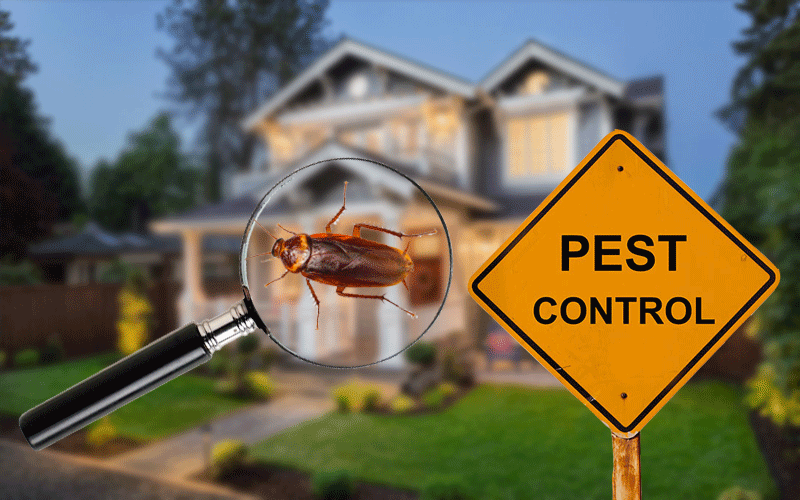A1 Charlotte Pest Control Companies - Your Neighborhood Pest Experts
A1 Charlotte Pest Control Companies - Your Neighborhood Pest Experts
Blog Article
Bed Insect Treatment Break Down: Contrasting Chemical Vs. Non-Chemical Solutions
In the world of pest control, specifically when taking care of the relentless issue of bed insects, the choice in between chemical and non-chemical therapy options can be a pivotal one. Both methods use distinctive advantages and downsides, influencing variables such as effectiveness, security considerations, and total cost. By checking out the nuanced details of each approach, a more clear understanding of which path to seek in resolving a bed pest problem can be obtained.
Effectiveness of Chemical Therapies
Chemical treatments for bed pest problems have been extensively recognized for their potent and quick effectiveness in eliminating these parasites. When considering the effectiveness of chemical therapies, it is essential to comprehend that they can supply a quick and thorough service to a bed insect problem.
Furthermore, chemical therapies have the benefit of supplying recurring results, indicating that they can proceed to remove bed pests also after the initial application. This residual activity is specifically advantageous in combating any kind of possible re-infestations. Additionally, the fast activity of chemical treatments can bring relief to individuals facing severe bed bug invasions, allowing them to restore control of their home promptly.
Safety Worry About Chemical Solutions
When making use of chemical services for bed insect treatment is guaranteeing the safety of owners and the environment,One critical facet that calls for cautious factor to consider. While chemical therapies can be effective in getting rid of bed bugs, they might posture threats if not handled appropriately. One of the primary safety interest in chemical services is the potential injury they can cause to human wellness. Direct exposure to certain chemicals used in bed pest therapies can bring about respiratory system problems, skin inflammation, or other unfavorable reactions, specifically in people with pre-existing problems or level of sensitivities. Furthermore, incorrect application or dosage of chemical pesticides can result in harmful residues remaining in the cured area, posing long-term health dangers to occupants.
Moreover, the ecological impact of chemical options is another considerable consideration. Some chemicals used in bed insect therapies may be harmful to useful bugs, wildlife, and ecological communities if they leach into the dirt or water systems. It is essential to make use of chemical treatments judiciously, adhering to safety and security guidelines, and taking into consideration much less harmful choices to minimize these dangers and make sure the efficient and safe administration of bed pest invasions.
Advantages of Non-Chemical Strategies
Considering the possible safety and security problems and environmental impact connected with chemical options for bed insect treatment, checking out non-chemical strategies presents a promising option with numerous distinct benefits. Non-chemical techniques provide a safer choice for houses, particularly those with youngsters, pets, or individuals sensitive to rough chemicals. These strategies eliminate the threats of exposure to harmful substances, decreasing the potential for damaging wellness results. Additionally, non-chemical therapies are eco-friendly, as they do not contribute to air or water pollution, making them a lasting option for pest control.
In addition, non-chemical solutions can be efficient in targeting bed bugs, consisting of hard-to-reach locations where chemical treatments might not pass through. Techniques such as heat treatment, vacuuming, vapor cleansing, and bed mattress coverings pest control vs exterminator provide thorough removal without making use of hazardous chemicals. Furthermore, non-chemical strategies can be much less disruptive, requiring marginal prep work and enabling for quicker reentry right into treated locations. Generally, choosing for non-chemical bed pest treatment techniques not just prioritizes security and environmental management but additionally guarantees comprehensive and effective bug control.
Limitations of Non-Chemical Treatments

In addition, non-chemical therapies often require multiple applications to achieve successful removal. This can be taxing and may not constantly assure complete elimination of all bed pests and their eggs, particularly in hard-to-reach or hidden areas.
In addition, the success of non-chemical treatments heavily have a peek at this website depends on correct execution and thoroughness, which can be challenging for people without expert experience. Poor application of non-chemical approaches may cause incomplete removal, bring about persistent infestations and the demand for added therapies.
For that reason, while non-chemical therapies have their advantages, it is necessary to recognize these restrictions and consider them when figuring out one of the most effective technique for managing bed bug invasions.
Cost Contrast: Chemical Vs. Non-Chemical Options
Provided the limitations linked with non-chemical treatments, an essential element to review in the context of bed insect administration is the expense comparison between chemical and non-chemical choices. In contrast, non-chemical treatments like warm treatment or vapor can be more expensive, with prices ranging from $1,000 to $6,000 for an entire home. While the first expense of chemical treatments may seem reduced, several treatments might be required to totally get rid of the invasion, possibly raising the overall expense.
Final Thought

Thinking about the prospective safety and security problems and environmental impact linked with chemical solutions for bed pest treatment, discovering non-chemical strategies offers an appealing alternative with several unique advantages.Provided the restrictions associated with non-chemical treatments, a vital facet to review in the context of bed pest administration is the expense comparison in between chemical and non-chemical options. In contrast, non-chemical treatments like heat treatment or vapor can be a lot more pricey, with costs ranging from $1,000 to $6,000 for an entire home. While the first price of chemical treatments may appear reduced, numerous therapies may be needed to totally remove the problem, possibly enhancing the general price.In conclusion, when contrasting chemical and non-chemical bed insect treatment options, it is important to consider performance, safety, benefits, restrictions, and expense.
Report this page